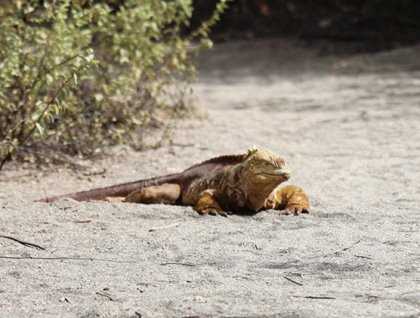Isabela Island is the largest island of the Galapagos, and covers more than half of its territory. It has many interesting places to visit, including Urbina Bay, located right in the belly of the seahorse-shaped island. After breakfast we are ready to set foot on this island to enjoy its wonderful flora and fauna. Landing on a black sandy beach, we venture ourselves inland where most of the animals are found. Our predictions about the giant tortoises were right - they were in many places almost from the beginning to the end of our hike, some large and others small.
The adventures continue and this time we met the other gentle inhabitants of the area, such as the mini dinosaur-looking creatures (Galapagos land iguanas) which are plentiful around here, especially after the removal of some of their competitors like feral goats and others. This expedition is divided in two; short hike and long hike options both offer almost equal opportunities for wildlife sightings.
An incredible number of young Galapagos hawks showed up to make this hike even more enjoyable than it actually was. We also spotted a large number of birds such as Darwin’s finches and mockingbirds.
By the middle of the trail we found something quite unusual for dry land - huge pieces of coral heads brought up by tectonic activity in 1954. The evidence of this sudden event is still seen scattered around the perimeter, such as sea urchins, turtle bones, shells of all styles and shapes, and barnacles, just to mention a few to confirm the magnitude of it. The end of the hike came to a place where most of our adventurers could take a quick refreshing dip in the blue ocean.
After a great morning we came back to the National Geographic Endeavour by lunch time to recover our energy with an amazing Ecuadorian lunch buffet.
In the afternoon we arrive at a place called Tagus Cove to do some other additional activities than the ones we normally do, which was kayaking for some and snorkeling for others. Both are enjoyable enough with such a great amount of wildlife here, such as penguins, cormorants, sea turtles, fishes, and more.
After this concluded we announced two more options. One was for some to go on a power hike to visit Darwin Lake, which is surrounded by incredible vegetation as well as geology. Others could take a more leisurely Zodiac ride to view and photograph its wildlife.
This is a photo expedition, so some of the activities focus specifically on photography, as well.
This was another incredible day on the western side of the Galapagos.






.jpg?width=106&height=85&mode=crop&scale=both&quality=50)


